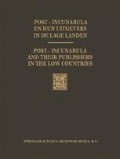Overzicht
Deze uitgave van het Nieuwe Testament in de Latijnse vertaling van Hieronymus heeft op zichzelf weinig speciaals; het is de eerste (Gutenberg) en ook de meest gedrukte vertaling geweest. De reden waarom we het boek toch opnemen in deze bloemlezing is omwille van het lettertype waarin het gedrukt werd. Dit zeer elegante type, zoals Byrck-man, Thibault’s boekverkoper in Keulen, dit beschrijft, is inderdaad niet alleen elegant maar bovendien de eerste italic hier in onze gewesten ontstaan. Deze nieuwe letter, de italic of littera Aldina genoemd omdat zij eerst gebruikt werd door de voornaamste Venetiaanse drukker Aldus Manutius rond 1500/1501, is ook als een zinnebeeld en kenmerk van nieuwe ideeën te beschouwen. Vergeleken met de gotische letter, die nog de middeleeuwse geest weerspiegelt en waarin toen het grootste aantal boeken gedrukt werd, brengt de italic de Italiaanse renaissance tot uitdrukking. Een nieuwe geest die, zoals in de kunst, dus ook haar uitdrukking vindt in het gedrukte. Deze letter verspreidde zich snel over Europa en reeds in 1522 gebruikte Dirk Martens hem voor de eerste maal. Maar de twee Varianten van de italic die men bij hem vindt zijn wellicht ingevoerd. Aan Jan Thibault komt de eer toe als eerste in de Nederlanden, in 1525, een italic ontworpen en gesneden te hebben.
Abstract
In itself there is nothing particularly special about this edition of the New Testament in St. Jerome’s Latin translation, since the translation was not only the first (Gutenberg) but also the most frequently printed. The reason for its inclusion here is its type. A “very elegant type,” as Thibault’s bookseller in Cologne, Byrckman, describes it, it is indeed not merely elegant but also the first italic type to come from the Netherlands. This new type, called italic or littera Aldina because it was first used by the greatest of the Venetian printers Aldus Manutius in about 1500–1501, may also be regarded as an “emblem and blazon of new ideas.” Compared with the gothic type, which still reflected the spirit of the Middle Ages and in which the majority of books were still printed, this italic type is the very expression of the Italian Renaissance: a new mind which thus found expression, as in art, so also in the printed page. This particular type spread rapidly through Europe: Dirk Martens used it as early as 1522. But the two varieties of italic to be found in his work may have been imported, and it is to Jan Thibault that credit is due for being the first person in the Netherlands, in 1525, to design and punch an italic fount.
Access this chapter
Tax calculation will be finalised at checkout
Purchases are for personal use only
Editor information
Rights and permissions
Copyright information
© 1978 Springer Science+Business Media Dordrecht
About this chapter
Cite this chapter
Testamentum, N. (1978). Antwerpen, Jan Thibault, 1525. In: Vervliet, H.D.L. (eds) Post-Incunabula en Hun Uitgevers in de Lage Landen / Post-Incunabula and Their Publishers in the Low Countries. Springer, Dordrecht. https://doi.org/10.1007/978-94-017-4814-8_24
Download citation
DOI: https://doi.org/10.1007/978-94-017-4814-8_24
Publisher Name: Springer, Dordrecht
Print ISBN: 978-94-017-4603-8
Online ISBN: 978-94-017-4814-8
eBook Packages: Springer Book Archive

